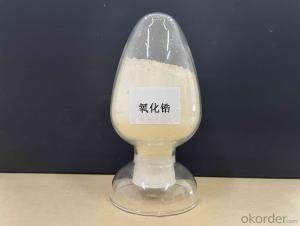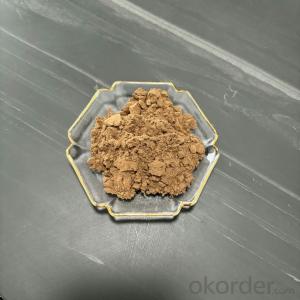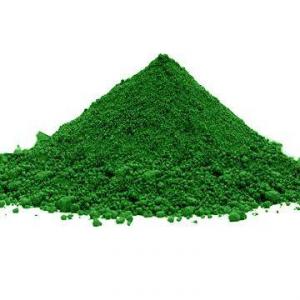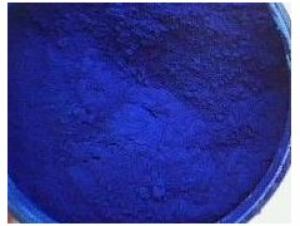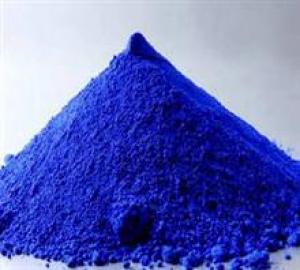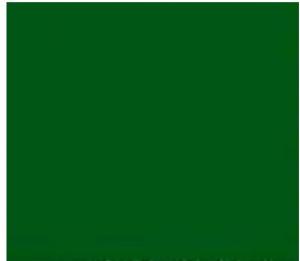Ultramarine Blue Best Quality
- Loading Port:
- Shanghai Port
- Payment Terms:
- TT or LC
- Min Order Qty:
- 1 Metric Ton m.t.
- Supply Capability:
- 8000MT Per Year m.t./month
OKorder Service Pledge
OKorder Financial Service
You Might Also Like
Products Details Of Ultramaine Blue :
Edition | 2012-07-29 | |
Product type | Blue Pigment | |
Product Form | Power | |
Chemotaxonomy | Na6Al4Si6S4O20 | |
Color Index | Color Blue 29:77007 | |
CAS No. | 57455-37-5 | |
Color Value&Tint Strength Refer Standard:DIN 55986 (1981) Use 1:2 Tio2 dilution and tinting strength parameter matching color value | ||
MIN | MAX | |
△L* | -0.7 | 0.7 |
△a* | -0.7 | 0.7 |
△b* | -0.7 | 0.7 |
△E*ab | 1.0 | |
Relative tinting strength % | 95 | 105 |
Package of Ultramaine Blue :
25 KG/ Kraft bag , 20 MT / 20 FCL .
Suggest Using of Ultramaine Blue :
Widely used in paint, ink, paper making, printing and dyeing textile, culture and education,
architecture, rubber, plastic, cosmetics, food and other industries and can be used as colorant,
brightener and color matching agent, etc.
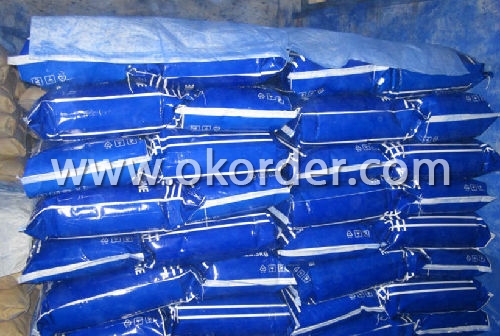
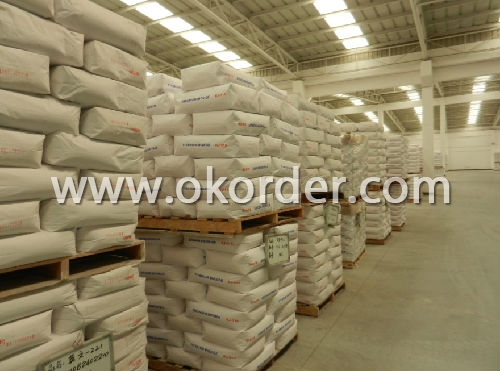
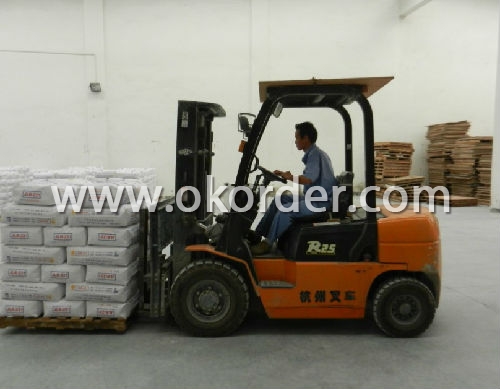
- Q:We see pigments everywhere in products. They make a variety of things we see today. Where does it come from? Do they actually take a red rose pedal, grind the color and designate it as the color red?
- Pigments selectively reflect and absorb specific wavelengths in the visible region of the electromagnetic spectrum, which is roughly between 400 and 800 nm wavelength. When visible light is incident on a pigment parts of the spectrum are absorbed by certain chemical bonds that are found in conjugated systems or other components of the pigment, known as chromophores or colour centres. Other wavelengths or parts of the spectrum are reflected or scattered. Many pigments are charge-transfer complexes, such as transition metal compounds, but there are others that are organometallic compounds. These have wide light absorption bands that subtract most of the colours of the incident white light. The resulting reflected light spectrum creates the appearance of a colour. The difference between a pigment and a dye is that a pigment is insoluble in the substance that it is used to colour, therfore what you actually end up with is a suspension (e.g. blue pigment in polyethylene), whereas a dye soluble in a carrier so you end up with a solution of the dye, and the solvated dye molecules have an affinity to the surface of the substance that they are being used to colour (fabric dye molecules adsorb to the surfaces of the fibres that make up the fabric).
- Q:Is gel food coloring a pigment or a dye?
- Dyes contain pigments, my friend. What is a pigment? They are like little beads. Very very tiny beads of the same color. Then if you spread these out, they give the thing a color. For example, the little green beads in leaves give it a green color. Pigment in our hair gives it a blonde/auburn/brown/black color. What is a dye? A dye is a liquid made up of water and pigments. The pigments are dissolved in water (well not really dissolve just that you cant see the beads) so that it's easier for us to use it. Everything that has a color is made up of pigments. So, gel food coloring is a thicker version of a dye that contains pigments.
- Q:There was a question, not to long ago, that asked are L'oreal HIP pigments good? What are pigments?
- Pigmen are a cross between men and pigs. They were basically a result of a genetic experiment by the U.S. Government back in the 80's. The ultimate goal was to use these so-called Pigmen in battle because they were thought to be the ultimate warriors. Unfortunately, the Pigmen could have cared less about fighting and basically just oinked a lot and wallowed in mud puddles on the battlefield. The enemy easily shot them as they rolled around on the ground.
- Q:So i'm writing up a lab report and i'm just a little confused on why scarlet, rosy, cinnabar and vermillion mutants contain the same kinds and amounts of pigments found in wild-type according to paper chromatography. Since they're mutants shouldn't it be different? I don't understand how i'm going to explain that they are mutants when it appears that they have the same phenotype as wild-type. Thank you so much for your help!
- Man pigments determine the colour of the eye. If the composition of pigments is same in all the flies,how can the colour in which their eyes look differ?isn't this a contradiction?i suspect the accuracy of The chromatography test because even a very very slight change in the amount of pigment can significantly change the colour. The phenotype is always different in mutants due to different genotype. in genotype is taken for granted if a change in phenotype is present. Wait just got over into a nice point. Sometimes even if the pigment composition being same different colours m8 be produced due to different allotropes or iro of the same pigment might have different colours!though allotropes(not isomers) have same composition but differ in,their post translational changes r different.since post translational changes r indirectly influenced by genes.this completely explains this case.
- Q:Does anyone know of a way to change the color of your iris' permanently?I've been researching for a while, and have not been able to find anything! I already know about newcoloriris (surgery), but that had loads of side effects. I already know about contacts (ive had them on and off for a while).I don't see how with all the science and technology in the world, there's no way to simply lighten your eye color. We can literally dye our skin, we can tattoo our eyeballs, we can do almost ANYTHING in the world today. So, how has nobody discovered a way to change eye color.?I'm aware that blue/light eyes are a result of low melanin production, But i don't understand how there's no known way to reduce the overproduction of melanin in darker/brown eyed people.It's really frustrating. If anyone knows any websites, doctors, or scientists currently working on a way to do this, please let me know! Or if you know of a new way someone has come up with, please let me know!lt;3 THANKSSSS
- Many people strive to attain lighter, brighter, healthier-looking skin. Learning to properly care for your skin on a day-to-day basis will help your skin stay light and tight, while more substantial and scientifically-proven lightening products are also widely available. In my opinion this is the best method https://tr.im/71GGy
- Q:why light and pigments are different?
- A pigment is a material that changes the color of reflected or transmitted light as the result of wavelength-selective absorption. This physical process differs from fluorescence, phosphorescence, and other forms of luminescence, in which a material emits light. Many materials selectively absorb certain wavelengths of light. Materials that humans have chosen and developed for use as pigments usually have special properties that make them ideal for coloring other materials. A pigment must have a high tinting strength relative to the materials it colors. It must be stable in solid form at ambient temperatures. For industrial applications, as well as in the arts, permanence and stability are desirable properties. Pigments that are not permanent are called fugitive. Fugitive pigments fade over time, or with exposure to light, while some eventually blacken. Pigments are used for coloring paint, ink, plastic, fabric, cosmetics, food and other materials. Most pigments used in manufacturing and the visual arts are dry colourants, usually ground into a fine powder. This powder is added to a vehicle (or binder), a relatively neutral or colorless material that suspends the pigment and gives the paint its adhesion.
- Q:Does albinism cause lack of ALL pigment, or just black pigment? Does this very on the species?
- Mammals and birds only have melanocytes (these produce varying amounts of brown or black pigment), so that's the only pigment that needs to be affected for them to display albinism. But other types of animals have multiple types of chromatophores. An albino snake, for example, would also need to have the cells that produce reds, yellows, and blues deactivated to appear white/colorless. For these animals to appear as albinos, all pigments would have to be affected.
- Q:I need to find powdered paint or pigment that I can throw, for some photographs.Preferably cheap, and that wouldn't stain skin.I've looked into powder paint, though this tends to stain skin for about a week.Thanks :)
- Smash up sidewalk chalk.
- Q:Explain light activation of pigments (absorption of light by pigments)?
- A pigment is a substance that imparts color by absorbing some frequencies of visible light but not others. For instance, there are a lot of substances that absorb ultraviolet light into the visible spectrum, in other words they also absorb plain violet light. Since they absorb violet light but reflect back the rest of light, they appear yellow. Purple pigments, on the other hand, are quite rare because they absorb purple light (which has the highest energy of visible light) and reflect back everything else. When anything absorbs a photon of electromagnetic radiation (light, x-rays, ultraviolet, infrared, microwaves, gamma rays, radio waves), it is activated which means that it takes the energy of the photon and goes to an energy state that is higher by the same amount of energy that was in the photon. At the molecular level, energy is quantized, meaning its restricted to particular states. For instance, vibrational energy corresponds to infrared light: there are only certain ways, called modes, that a molecule can vibrate in, if it can't vibrate in an appropriate mode, it can't absorb the infrared radiation that corresponds to being promoted to that mode. That's why substances can be transparent. At the higher energy state, the substance might be able to participate in chemical reactions that it would not be able to participate in in a lower state. That's usually what is meant by light activation. So a pigment that absorbs visible or UV light might become activated and react with something or react in ways that it wouldn't be able to in the dark.
- Q:Can somebody answer this in AP BIO language please
- A pigment molecule absorbs at specific wavelength(s), meaning that when light of a specific wavelength is incident to the molecule only certain wavelengths are absorbed while others are transmitted. The spectrophotometer emits monochromatic light (light of only one wavelength) which passes through the pigment molecule and a detector determines the amount of light that is either absorbed or transmitted by the sample. This is done at wavelengths from the UV (180-330 nm) to the visible (330-700 nm) and the light that is either transmitted or absorbed is detected by the spectrophotometer and is able to be graphed with absorbance representing the y-axis and wavelength representing the x-axis. The resultant graph will depict the absorption spectrum of that particular pigment molecule. Hope that helps.
1. Manufacturer Overview |
|
|---|---|
| Location | Hunan, China |
| Year Established | 1998 |
| Annual Output Value | Above US$ 30 Million |
| Main Markets | 20.00% North America 15.00% South America 15.00% Eastern Europe 10.00% Southeast Asia 10.00% Northern Europe 10.00% South Asia 10.00% Western Europe 5.00% Africa 5.00% Mid East |
| Company Certifications | ISO9001:2000; |
2. Manufacturer Certificates |
|
|---|---|
| a) Certification Name | |
| Range | |
| Reference | |
| Validity Period | |
3. Manufacturer Capability |
|
|---|---|
| a)Trade Capacity | |
| Nearest Port | Shanghai Port |
| Export Percentage | 41% - 50% |
| No.of Employees in Trade Department | 6-10 People |
| Language Spoken: | English; Chinese; |
| b)Factory Information | |
| Factory Size: | Above 10,000 square meters |
| No. of Production Lines | Above 10 |
| Contract Manufacturing | Design Service Offered; Buyer Label Offered |
| Product Price Range | High; Average |
Send your message to us
Ultramarine Blue Best Quality
- Loading Port:
- Shanghai Port
- Payment Terms:
- TT or LC
- Min Order Qty:
- 1 Metric Ton m.t.
- Supply Capability:
- 8000MT Per Year m.t./month
OKorder Service Pledge
OKorder Financial Service
Similar products
New products
Hot products
Related keywords
















